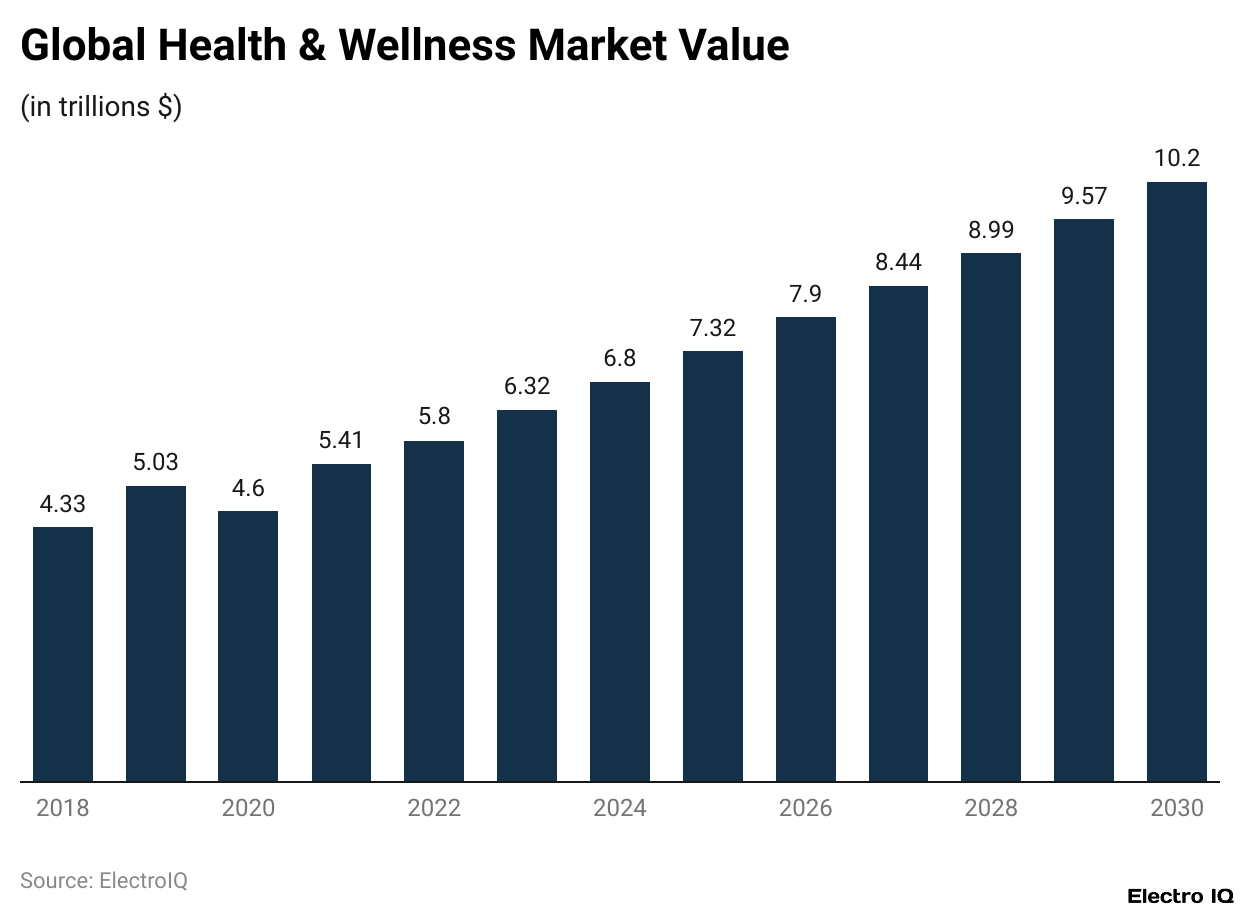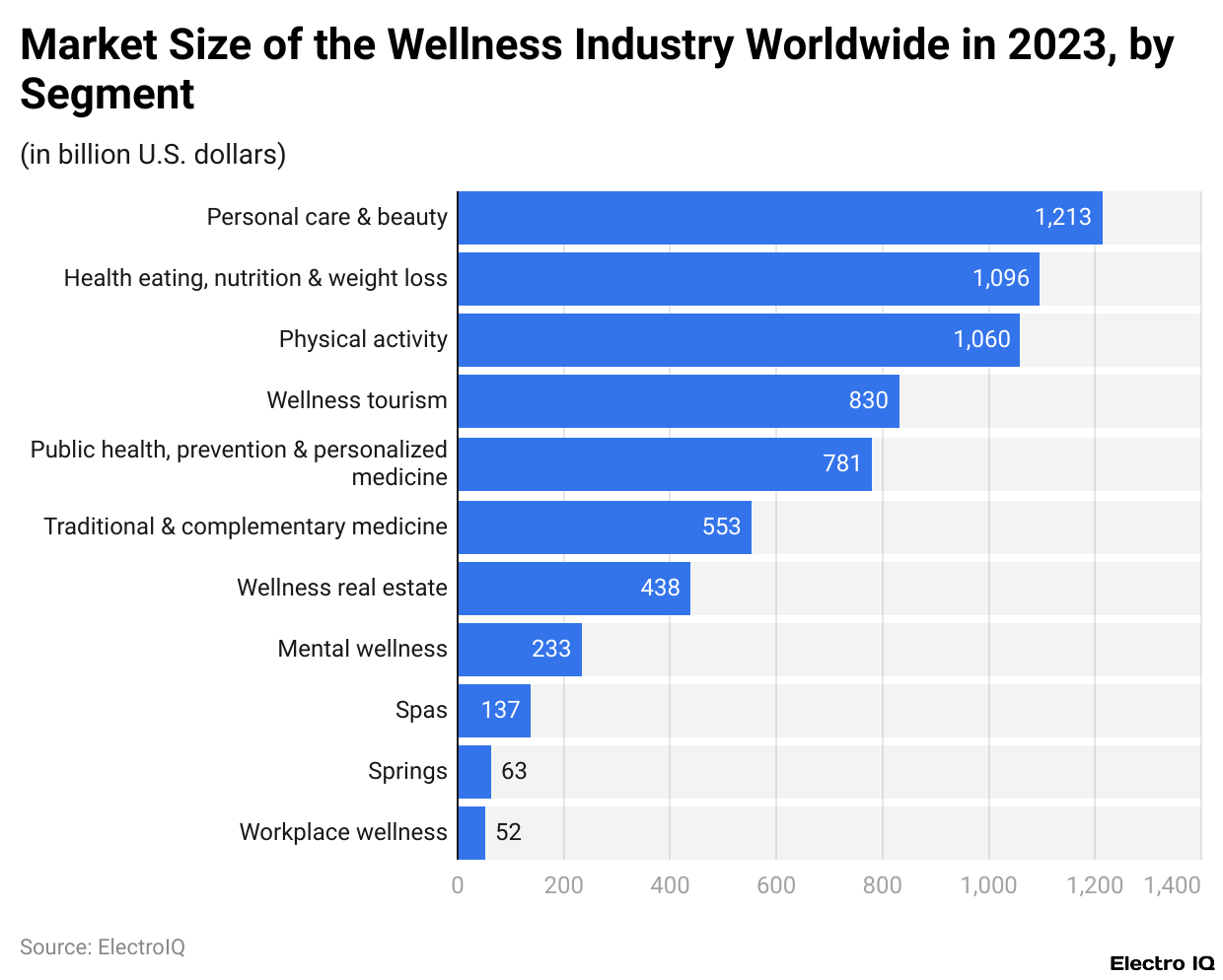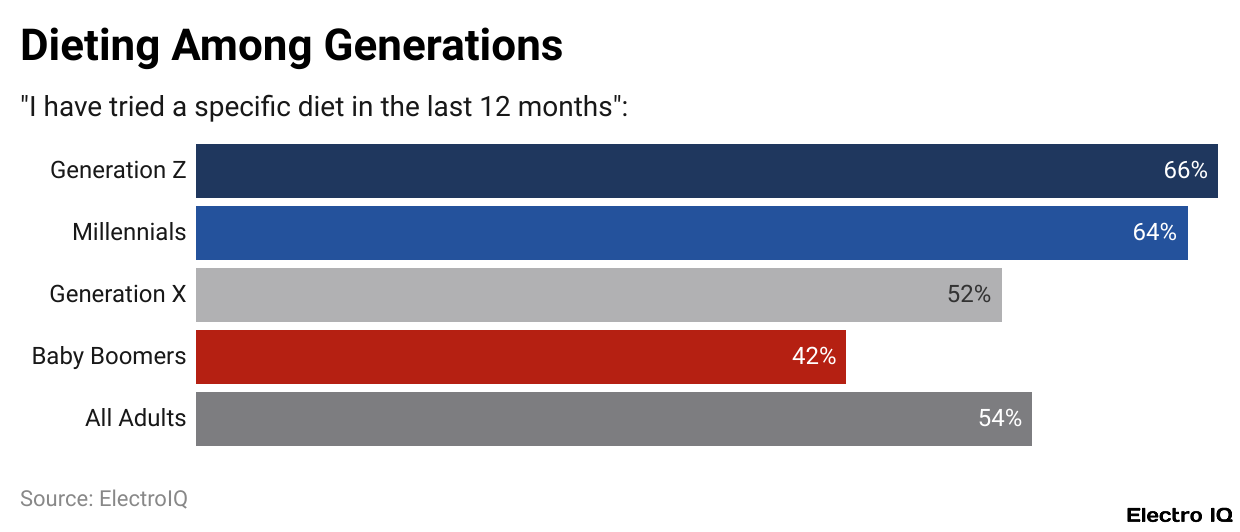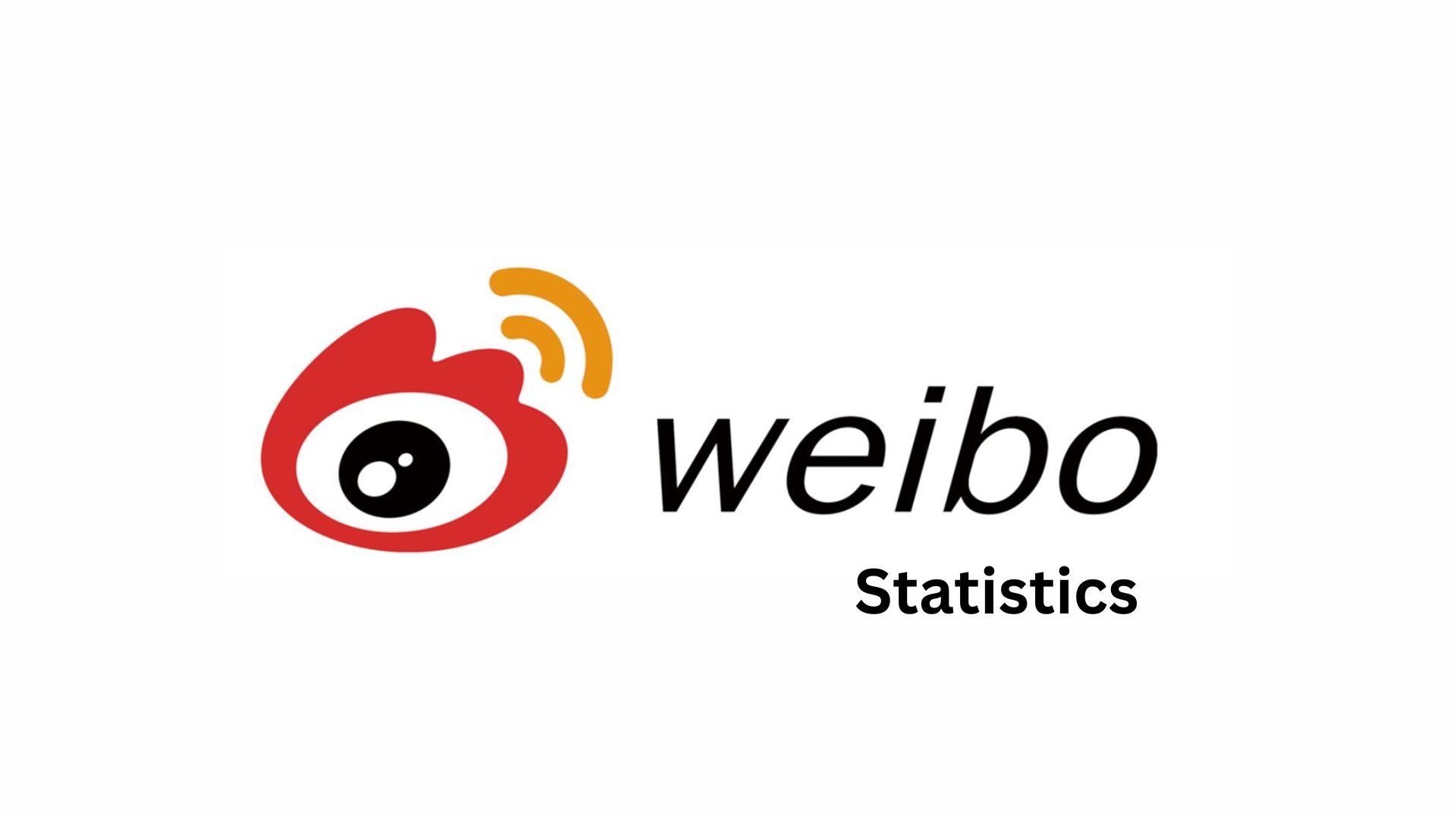Health Conscious Consumer Statistics By Demographics, Spending’s, Health and Wellness Market Size (2025)
Updated · Jul 08, 2025

Table of Contents
Introduction
Health Conscious Consumer Statistics: In 2024, health consciousness has become a key driver of global consumer behaviour. People are becoming conscious about their health, keeping wellness, nutrition, and sustainability in mind, thus making informed decisions about their lifestyles and purchases. This transformation is reflected in different sectors, such as food, beauty, fitness, and technology.
The article goes on to reflect upon various updated trends that underscore the varying preferences of the health-conscious consumers, statistics in the year 2024.
Editor’s Choice
- Wellness tourism sold 830 billion dollars, with Europe leading in wellness trips and spas.
- Around 60% of consumers prefer ingredients of natural origin; 55% consider environmental impact.
- Spending on natural health food is growing at a rate of 5.3% annually and is forecasted to reach $38.5 billion by 2033.
- Beauty and anti-ageing is the biggest segment under health and wellness, expected to earn $1.328 trillion (18.1%) in 2025.
- The global wellness economy stood at $6.3 trillion in 2023, of which $1.2 trillion came from personal care and beauty.
- Some 53% of Millennials rate health and wellness as important.
- The U.S. wellness market stood at $2.26 billion in 2025, growing by 59.5% since 2020.
- 73% of Millennials and Gen Z eat healthy to enhance their energy; 66% of Gen Z and 64% of Millennials have tried a diet within the past year.
- 82% of U.S. consumers put wellness first; 90% of Millennials and Gen Z spent on healthy food even when the economy grew dim.
- The health and wellness world is valued at a staggering 7.32 trillion U.S. dollars in 2025 and is anticipated to exceed the $10-trillion mark by 2030.
- Ante a beauty and personal care market scaling a figure above $630 billion in 2024-U.S. stands ahead in revenue generation by $30 billion when compared to China.
- 45% of the food and beverage companies reformulated their products in order to reduce sugar, salt, and unhealthy fats.
- 67% of consumers are willing to pay more for foods that offer health claims.
- Healthy Eating, Nutrition & Weight Loss is a $1.239-trillion industry, the largest industry.
- Natural health food spending will register an expected $26.1 billion in 2025, just 2.1 % of the healthy eating market.
- More than half of the women, i.e., 56% and 52% of men, tried some diet within the last year.
- 30% avail of digital platforms for information related to the health benefits of foods.
- Only 52% of Gen X members and 42% of Baby Boomers have gone on a diet during the same period.
Global Health and Wellness Market Size

(Reference: capitaloneshopping.com)
- Given $7.32 trillion in size in 2025, the global health and wellness market is expected to outgrow the $10-trillion mark by 2030.
- The consumer-level, ever-increasing focus on personal well-being provides the impetus for this growth. In the U.S., wellness ranks among the top priorities for 82% of consumers, so it is safe to infer that a majority of the population actively seeks a healthy lifestyle.
- Millennials and Generation Z, people born between 1981 and 2012, have always been the hardcore wellness seekers-90% of these populations even snip spending on luxury items to keep buying healthy food choices during economic slump.
- The wellness industry in the U.S., representing $2.26 billion in sales in 2025, has surged by 59.5% compared with its 2020 counterparts.
- On the front of globalised health and wellness, the industry averages a growth rate of 7.36% per annum, while the U.S. market witnesses even faster growth at 8.16% per annum.
- These numbers advocate a still stronger and faster shift toward a health-conscious consumer behaviour.
Market Size Of The Wellness Industry By Segment

(Reference: statista.com)
- At the global level, the wellness economy was estimated at about $6.3 trillion in 2023, with personal care and beauty actually contributing $1.2-plus trillion, showing its huge chunk amid the larger wellness market.
- Meanwhile, the worldwide wellness tourism sector was estimated to be worth nearly 830 billion USD, showing strong consumer interest in health-focused travel.
- The beauty and personal care market has witnessed massive growth since 2020. Then, in 2024, total revenues from this sector had grown beyond $630 billion, with the personal care products segment taking the first runner-up position, closely followed by skincare.
- The United States was ranked first among the highest revenue-generating countries in the beauty and personal care sector in 2023, with China being second.
- When talking numbers, it was found that Chinese revenues fall by almost $30 billion as compared to those of the United States, which means a huge margin in favour of the American market.
- Europe became the most popular health tourism destination in 2022, logging in excess of 30 million wellness-related trips and leading in the number of spas around the world, ahead of Asia-Pacific by roughly 9,600 spa facilities.
- By far, the biggest number of thermal and mineral spring establishments was accounted for in the Asia-Pacific region, numbering nearly 23,000, underscoring the strengths of that region in natural wellness experiences.
Health Conscious Consumer Spending Statistics
- In 2025, it is expected that consumers will spend about $26.1 billion on natural health foods worldwide. Yet, that still accounts for a modest chunk of approximately 2.10% of the larger segment comprising clean eating, nutrition and weight loss.
- Spending on natural health food, of course, is projected to continue gaining slowly at the rate of 5.30% as an annual average until it probably hits the $38.5-billion mark somewhere around 2033.
- Within the overall health and wellness industry, beauty and anti-ageing are expected to lay claim to the top-grossing sector in 2025, with an approximate revenue of $1.328 trillion.
- The said amount accounts for 18.1% of the global health and wellness market. And not too far behind, the healthy eating, nutrition, and weight loss sector holds the second-highest position, with an estimated market value of $1.239 trillion.
Health Conscious Consumer Demographics

(Reference: capitaloneshopping.com)
- As per Capitaloneshopping, Health-conscious consumers statistics show that Health-conscious behaviour is different by generation, with younger generations exhibiting the largest visible trends.
- Individuals between 18 and 34 years old are most likely to follow a specialised diet, showing a stronger emphasis on personal wellness.
- Among Millennials and Generation Z, born between 1981 and 2012, 73% say they eat healthy food specifically to build their energy.
- 66% accounted for Generation Z, born between 1997 and 2012, and 64% for Millennials, born between 1981 and 1996, as having attempted a specific diet at least one time within twelve months.
- These rates are well above those of 52% of Generation X born between 1965 and 1980 and 42% of Baby Boomers born between 1946 and 1964, who said the same thing, indicating that older adults have less engagement with the concept of specialised eating.
- Millennials place a strong emphasis on wellness, with 53% saying health and wellness are very important to them. Income is equally a factor in diet choices.
- Annual household income of $75,000 or more slightly favours the try-diet consumer; 58% said a diet was attempted at least once in a year, versus 52% of those at lower income levels.
- Regarding gender, a mild difference shows that 56% of women have followed some kind of diet in a 12-month span, versus 52% of men.
- Marital status, on the other hand, doesn’t have much of an effect: 55% of single consumers and 53% of married consumers have reported diet attempts for the same period.
Health Conscious Consumer Shaping The Food Industry
- The food industry is undergoing radical change, driven by consumers who care about their health and want companies to provide healthier offerings and greater transparency.
- Two out of every three consumers (67%) say they would pay more money for foods or beverages that promote health and wellness.
- At the same time, 75% of people want food labels to convey health-related benefits, highlighting the strong need for transparency and education. This growing demand is fueling the health and wellness food industry, which is projected to expand at a CAGR of 6.7% in the next five years.
- Preferences are changing toward natural products, with 60% of the consumers preferring products with natural ingredients over synthetic ones.
- Another 55% mentioned the environmental impact of food choices, evidencing a rising trend of sustainability under the umbrella of health-conscious behaviour.
- Digital platforms are increasingly getting into the picture, with 30% of consumers consulting such platforms to discover the health virtues of various foods.
- 45% of food and beverage companies have reformulated their products, keeping these evolving expectations in view, stating they lowered their sugar, salt, and unhealthy fats, which implies that consumer demand is exerting a tremendous force in reshaping modern-day markets.
Conclusion
Health-conscious consumers statistics: The data of 2024 shows a profound transformation in the behaviour of consumers toward health and wellness. With increased needs for clean ingredients, transparency, and ethical sourcing, companies should further work to evolve along these demands. The technological enablement of these trends, when combined with social media, thus warrants another level of engagement.
Hence, brands will be expected to immerse authentically and creatively with their followers. Since the health-conscious consumer has taken over the market, keeping track of and adjusting to these preferences will forever spell success.
Sources
FAQ.
As of 2025, this industry is valued at $7.32 trillion worldwide, with projections that it will pass the $10-trillion mark by 2030. It is growing every year at an average rate of 7.36% globally and 8.16% in the U.S., with heightened attention on personal well-being.
Millennials and Generation Z (1981–2012) are considered the most engaged population in wellness behaviours. About 73% practice eating healthily for energy, and more than 60% have tried some form of diet in the past year. Those between the ages of 18 and 34 were also noted to be the most likely to incorporate some type of special diet into their eating habits.
It is in the beauty and anti-ageing sector that the health and wellness business was the biggest in terms of revenue in 2025, bringing in revenues of $1.328 trillion (18.1% of the market). Eating well, nutrition, and weight loss sectors come next at $1.239 trillion. The personal care and beauty segment alone contributed $1.2 trillion plus in 2023.
To suit consumer expectations as they evolve, 45% of companies in the food and beverage sector have resorted to product reformulations with the intention of reducing the amount of sugar, salt, and undesirable fats they contain. Beyond this 67%, consumers say they would pay extra for foods that enhance their health, whereas 75% would instead want to locate an apparent labelling of their benefits relating to health.
Nearly 60% of consumers like natural ingredients, whilst 55% weigh in on the environmental impact of their food choices. There has been a considerable shift, not just toward health for oneself but also toward sustainability and ethical consumption, being their own formulation of wellness.

Maitrayee Dey has a background in Electrical Engineering and has worked in various technical roles before transitioning to writing. Specializing in technology and Artificial Intelligence, she has served as an Academic Research Analyst and Freelance Writer, particularly focusing on education and healthcare in Australia. Maitrayee's lifelong passions for writing and painting led her to pursue a full-time writing career. She is also the creator of a cooking YouTube channel, where she shares her culinary adventures. At Smartphone Thoughts, Maitrayee brings her expertise in technology to provide in-depth smartphone reviews and app-related statistics, making complex topics easy to understand for all readers.










